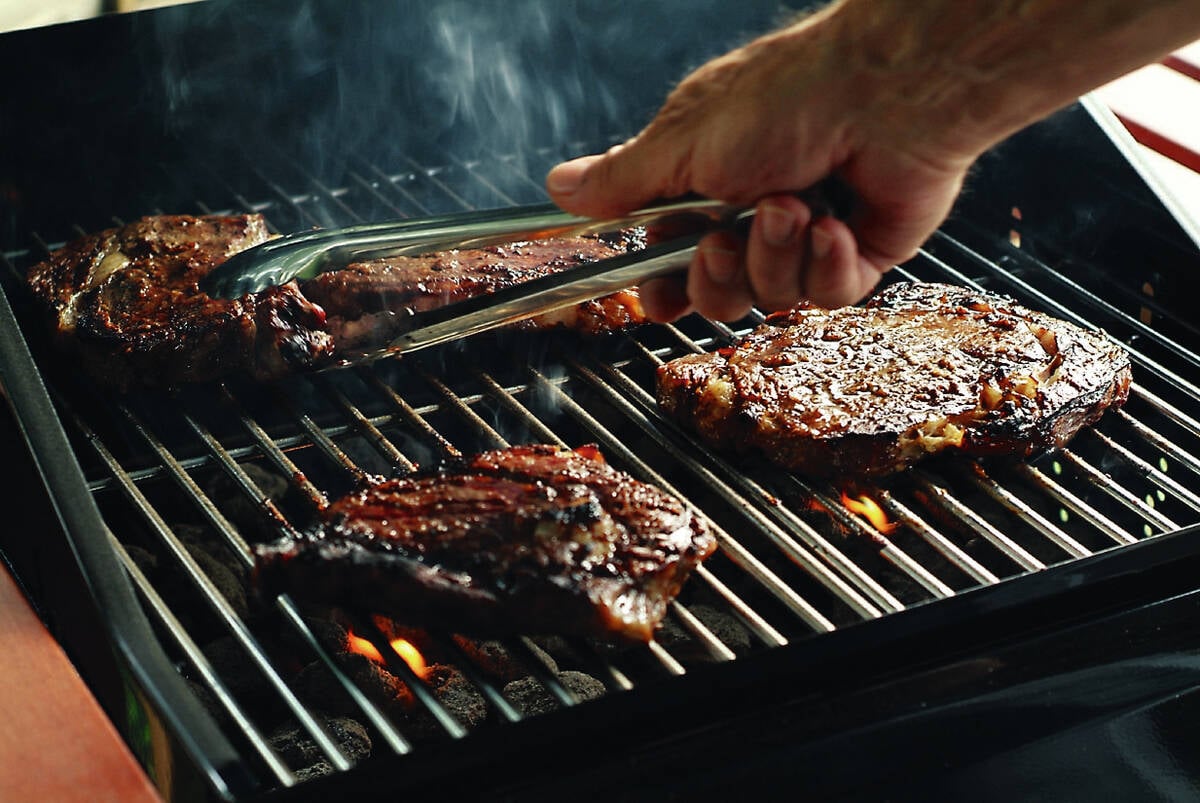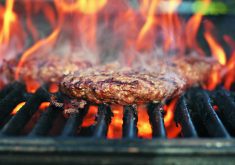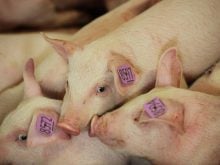SASKATOON — Americans will be shelling out more money for their spring barbecues this year, according to Rabobank.
The average price of a 10-person barbecue is going up an estimated 4.2 per cent in 2025 to US$103.
“We’ve finally broken through the $100 barrier this year,” said Tom Bailey, Rabobank’s senior analyst of consumer foods.
Read Also

Canada told trade crisis solutions in its hands
Canadians and Canadian exporters need to accept that the old rules of trade are over, and open access to the U.S. market may also be over, says the chief financial correspondent for CTV News.
The budget is based on a per person diet that includes one burger, one chicken sandwich (both with lettuce, tomatoes and cheese), chips, two beers, a soda and ice cream.
Bailey said the price increase is due to a variety of factors. Tariffs is one of them, but it only accounts for 0.25 percentage points of the increase.
“It’s a little cliché but it’s true, the barbecue is one of the most American meals we have,” he said in a recent webinar.
An estimated 90 per cent of the barbecue comes from U.S. ingredients, which is why import tariffs have minimal impact.
The price increase is more due to structural factors, such as the rising cost of farm inputs, which are up 10 per cent versus the long-term average.
Labour costs are up one percent over the long-term average.
There are mounting regulatory costs due to U.S. president Donald Trump’s Make America Healthy Again initiatives.
Risk management fees are climbing due to the uncertain trade and economic environment.
The result is that wages are struggling to keep up with rising food costs.
Average weekly earnings are up about 12 per cent between 2022 and 2025. The consumer price index for food consumed at home has risen by the same amount, while food consumed away from home is up 17 percent.
“For many Americans, the grill is still hotter than their paychecks,” said Bailey.
Lance Zimmerman, senior beef analyst with Rabobank, said the price of ground beef is up 6.4 per cent compared to last year.
Beef prices are likely to remain elevated for a few years as total cattle slaughter continues to trend down from the peak of 2022.
He expects slaughter to bottom out in 2028 and then start climbing in 2029 as the herd slowly rebuilds. Heifer retention rates are already starting to rise.
“We’ve brought a lot of profitability back to farms and ranches,” said Zimmerman.
Beef demand is at the highest level since 1986 despite rising prices as Americans embrace protein-rich diets and increasingly fire up their smokers, flattop griddles and barbecues.
Mary Ledman, global dairy strategist, said the steadily declining dairy consumer price index reversed course in 2024 and started rising. In March it was up 2.2 per cent.
“That’s the highest level we’ve seen since June of 2023,” she said.
Ice cream prices are up 3.15 per cent compared to last year, while processed cheese values have dropped 1.38 per cent.
Per capita ice cream consumption fell to 11.7 pounds per person in 2023, which is the most recent year with available data. That is the lowest level on record.
“Ice cream faces growing competition within the frozen dessert category, the snacking category, and of course the indulgent category,” she said.
By contrast, processed cheese consumption reached 8.5 lb. per person, the highest level since 1999, and natural cheese consumption hit a record 40.5 lb. per person.
Christine McCracken, senior analyst for animal protein, said chicken prices are up 15.7 per cent year-on-year.
That is led by soaring wholesale breast meat prices, which are up 53 per cent. Restaurant chains are promoting chicken in response to high beef prices.
McDonald’s McCrispy Strips have launched a new chicken war in the chicken tenders space.
The “explosive” price increase hasn’t fully flowed through to the retail level yet, but she expects prices to remain high despite heading into barbecue season.
High prices have not resulted in rising poultry production due to hatchability problems and disease challenges.
Jim Watson, senior analyst for beverages, said beer prices are keeping up with the consumer price index, while wine and spirits have been greatly lagging.
“Beer is less of a value proposition by far than it used to be,” he said.
That has been the case since 2008 when InBev acquired Anheuser-Busch and switched pricing philosophies.
The upshot is that beer sales have been trending down by volume, although dollar sales are up due to the popularity of craft beers.
Watson thinks beer needs to follow the pricing strategy of wine and spirits soon because it continues to lose ground to seltzers and spirit-based ready-to-drink beverages.
Beer prices are up 3.1 per cent compared to last year.
Lettuce prices are down 1.2 per cent, while tomatoes are up 16.9 per cent.
The U.S. is increasingly reliant on imported tomatoes, with seven out of every 10 tomatoes imported today compared to three out of 10 in 2000.
Most of those imports come from Mexico, where prices are set to rise due to a 21 per cent duty that comes into force July 14, said David Magana, senior analyst for fresh produce.
JP Frossard, consumer foods analyst (bakery), said hamburger and hot dog bun prices are down 2.7 per cent compared to last year, or about a penny per bun.
“It’s minor but also meaningful because it marks the end of a cycle of double-digit price increases,” he said.
The bun market is evolving as consumers gravitate toward premium offerings such as pretzel, brioche, keto, organic and gluten-free products.
The breakdown is now about 60 per cent value products and 40 per cent premium.
“Upgrading the bun can transform the entire eating experience visually and in taste,” said Frossard.
Burger joints are making the shift and so are backyard chefs.
“It’s a small investment with a big return on taste and presentation,” he said.
















